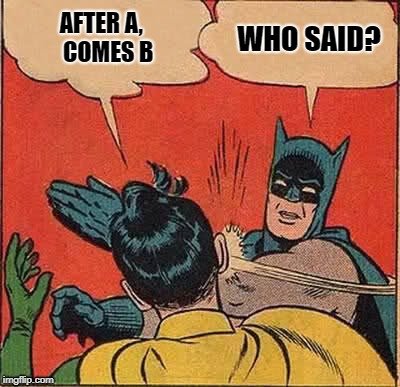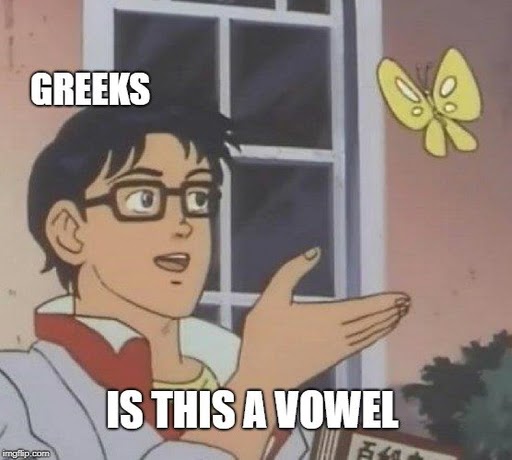The arrangement of the alphabet’s letters is due to its historical development. The order of the modern English letters has remained relatively unchanged since the time of the Phoenicians or even the North Semitics before them.
While singing the famous alphabet song, my three-year-old niece mixed up the order of the letters. I laughed and corrected her, but she still didn’t understand. With a confused expression, she asked me, “Why?”
So, why are the letters of the alphabet arranged the way they are?

English is considered a challenging language to learn due to its inconsistencies and the various ways each letter can be pronounced. It’s not surprising that modern-day English has evolved from multiple languages over hundreds of years.
History Of The English Alphabet
The English alphabet originated from the Phoenician script, a writing system that Phoenician traders spread throughout the Mediterranean area. This system consisted of twenty-two consonant letters, with the phonetics remaining unchanged from its ancestor, the North Semitic script, which is a variant of the Proto-Semitic script. Both the North Semitic and Phoenician scripts, like Hebrew and Arabic today, were written from right to left.
The Greeks, heavily influenced by the Phoenician alphabet, created a twenty-four letter system around 800 BC. They repurposed some unnecessary consonants as vowels and introduced new symbols for additional sounds in their language.

One significant change made by the Greeks, aside from adding vowel sounds, was the direction of writing. Initially following the Phoenician tradition of right-to-left writing, the Greeks gradually transitioned to boustrophedon (bi-directional) and eventually settled on the present left-to-right system. Boustrophedon is a type of text where writing alternates between right-to-left and left-to-right in each line.
The Etruscan alphabet, influenced by the Western Greek alphabet, gave rise to the Latin (Roman) script. It initially consisted of twenty letters and later gained three more (J, V, and W) during the Middle Ages. Y and Z were introduced later from the Eastern Greek alphabets.
 Greek and Latin alphabets evolved over the years. (Photo Credit: Druss/Wikimedia Commons)
Greek and Latin alphabets evolved over the years. (Photo Credit: Druss/Wikimedia Commons)
As Latin and other writing systems spread across Europe, different regional scripts and letterforms emerged to accommodate linguistic differences and regional requirements. Some of these changes were accidental shifts that aimed to simplify or expedite the writing process. English capital letters mostly come from the Roman style of writing. In the later Middle Ages, specific scripts developed in northern Europe, forming the lowercase letters used today.
The Origin of the Letter U
You may be curious as to why there seems to be a missing letter here (20 Latin/Roman letters + J + V + W + Y + Z = 25 letters). This is because the letters U and V were considered as one letter until recently. Before, the letter V represented both the vowel U and the consonant V. It was not until the 1600s that ‘U’ became its own separate letter. This is likely why the letter W is pronounced as ‘double U’ even though it visually resembles ‘double V’.

The Reasons for Alphabetical Order
In certain cultures such as Greek, Hebrew, and Arabic, there is a system of assigning numerical values to names, words, or phrases based on the letters they contain. Many of these systems are derived from or inspired by the Hebrew system known as Gematria. It is believed that words with identical numerical values have some connection to each other or to the number itself. Therefore, in some alphabets, the order may have been determined to match the numerical values that the letters represented for merchants.
Some newly added letters were placed at the end of the alphabet. When Alexander the Great of ancient Greece came into contact with the Romans, the Romans began borrowing Greek words and had to modify their alphabet to accommodate these words. They adopted the letters Y and Z from the Eastern Greek alphabet and placed them at the end of their own alphabet.

Some letters in the alphabet are placed together because they sound similar or used to sound similar in the past. The letter W was placed near the letter V for this reason. As mentioned earlier, the letter U was introduced later to represent the vowel sound, while the letter V was used for the consonant sound. This is how U, V, and W came to be grouped together. The letter J originally started as a variant of I, with a tail added to the last I when there were multiple ones in a row. Later on, people began using J as a consonant and I as a vowel, which is why they are placed together.
However, for the most part, the order of the alphabet’s letters is simply because it has always been that way. The modern English letters we see today have been passed down through the centuries, and the basic order of the alphabet has remained relatively unchanged since the time of the Phoenicians, or even the North Semitics who came before them!
